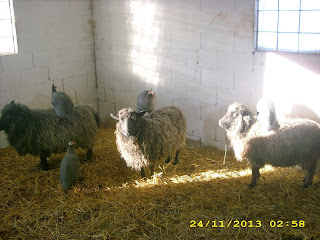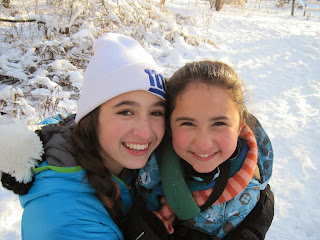by Andy
We are in a moment in history when we collectively need to rise to the occasion. When as a teacher I see adolescents look at History, I see them often initially interpret past events as clearly good or evil. They can be frustrated with the inaction of historical people in the face of obvious injustice. There is outrage at slavery, the Holocaust, the Trail of Tears. The hindsight of History allows young people to look back in disbelief and ask "How could they have allowed that to happen for so long?" Our heroes are those who reach for greatness and often they are those who are great because they have had the courage and creativity to fight injustice: Martin Luther King, Abraham Lincoln, Nelson Mandela. My own heroes were a mix of great, ground-breaking people and great fighters against injustice: Edward Abbey, Jerry Garcia, Fran Tarkington, John Lennon, Wendell Berry. Of course, our heroes are also personal: our parents, teachers, and peers. I remember an older college student who made a massive sculpture out of styrofoam that brought attention to the problem of waste. He was a giant in my eyes! We are in an important historical moment right now. Future generations of adolescents will look back on our moment in history and ask "How could it have taken so long for them to change?" We must all become heroes, and we need to engage our adolescents and our own adolescence in order rise against the injustice of the moment. Make no mistake, there is injustice inherent in this issue.
The climate change issue often overwhelms me. I look at the numbers and I can't fathom how we are going to face this. The other day there was a rebroadcast on MPR of a talk by Hal Harvey, a CEO of Energy Innovation: Policy and Technology LLC (see link at the end of this blog). He laid it out for us. We are currently over 400 parts per billion (ppb) of carbon in the atmosphere. Based on research of climates from the past, scientists can tell that the last time earth was at that level of carbon, sea level was 75 feet higher. The fact that sea level has not risen that far yet seems to be just a matter of time. Yikes! But it is not just sea level rising, the warming oceans evaporate more water, and this creates more storms and more severe storms. Think more deadly typhoons, hurricanes, and "super storms". Also, as carbon accumulates in the oceans, the resulting carbonic acid acidifies the oceans and undermines the shells of the zooplankton, which are the basis for every ocean ecosystem, not to mention all the people who depend on the ocean for food. Climate change shifts rainfall patterns and some areas will be and are experiencing chronic droughts, which can lead to huge agricultural losses and more frequent wildfires. Then there are are the feedback loops that have the potential to accelerate the accumulation of carbon in the atmosphere. The most distressing to me is the methane trapped in the permafrost in the tundra areas. As the permafrost thaws, the methane is released. Methane is many times more potent as a greenhouse gas than carbon dioxide. We need radical change and we need it now. Do you know who are really good at radical change? Adolescents.
Hal Harvey let us know that even if we stopped all emissions of carbon today, the carbon in the atmosphere will still stay at 400 ppb for a very long time, maybe hundreds of years. But we are not stopping. In fact, if we keep emitting carbon at the current rate, soon we will be at 650 ppb. Mr. Harvey described dire consequences as that happens, and he said that at some point we will just have to stop, because the planet will become unlivable. Why not stop now? HOW ABOUT NOW!?! I was blown away when Mr. Harvey said that if we are to have any sort of a chance, we will need to leave 80% of all fossil fuels (coal, natural gas, and oil) in the ground. I had been secretly hoping for peak oil to save us. I had hoped that as we run out of fossil fuels, they would become more costly compared to renewables, and we would make the shift because of economics. But it seems we need to voluntarily leave fossil fuel in the ground. This will be hard for those who benefit financially from extracting and processing fossil fuels. With the advent of fracking, natural gas is cheaper than ever, and the U.S. finally has a measure of "energy independence," but all that is meaningless in a time of runaway climate change. We need worldwide action on climate change. Now. Mr. Harvey was not all doom and gloom. He reminded us that humans are resourceful and creative. He spoke of how the United States transformed its entire economy in the space of a few months when we entered World War II. Those adolescents and young adults who fought and overcame fascism became what we now call our "Greatest Generation." We now need another transformation and we also need another incredible generation. Our young people are ready to answer the call to fight for justice.
Climate change is a social justice issue because, at least at first, the results of climate change are experienced more by some people than others. Poor people are the first to suffer in any disaster. Island nations are in trouble. People who are chronically in the path of tropical storms already are demanding action on climate change. Agricultural losses to long term drought or unforeseen flooding are displacing small-scale farmers and herders all over the planet. We need empathy even more now, as collectively we become immune news of death in far away places. We need engagement in the political processes at the local, state, and national level. There is actually a lot we can do. One of my current heroes, Bill Mckibben, is leading efforts to get people to encourage institutions to divest from fossil fuels. His organization, 350.org, is named for the top limit of ppb for carbon that scientists think would have prevented large-scale climate change. We need his kind of energy, enthusiasm, and creativity. We can find it in our young people if we only call it forth. I think we get stuck collectively as a species where we cannot nurture a developmental stage. We need to get unstuck at this developmental stage and unleash the positive potential of adolescence in order to survive.
The climate change issue often overwhelms me. I look at the numbers and I can't fathom how we are going to face this. The other day there was a rebroadcast on MPR of a talk by Hal Harvey, a CEO of Energy Innovation: Policy and Technology LLC (see link at the end of this blog). He laid it out for us. We are currently over 400 parts per billion (ppb) of carbon in the atmosphere. Based on research of climates from the past, scientists can tell that the last time earth was at that level of carbon, sea level was 75 feet higher. The fact that sea level has not risen that far yet seems to be just a matter of time. Yikes! But it is not just sea level rising, the warming oceans evaporate more water, and this creates more storms and more severe storms. Think more deadly typhoons, hurricanes, and "super storms". Also, as carbon accumulates in the oceans, the resulting carbonic acid acidifies the oceans and undermines the shells of the zooplankton, which are the basis for every ocean ecosystem, not to mention all the people who depend on the ocean for food. Climate change shifts rainfall patterns and some areas will be and are experiencing chronic droughts, which can lead to huge agricultural losses and more frequent wildfires. Then there are are the feedback loops that have the potential to accelerate the accumulation of carbon in the atmosphere. The most distressing to me is the methane trapped in the permafrost in the tundra areas. As the permafrost thaws, the methane is released. Methane is many times more potent as a greenhouse gas than carbon dioxide. We need radical change and we need it now. Do you know who are really good at radical change? Adolescents.
Hal Harvey let us know that even if we stopped all emissions of carbon today, the carbon in the atmosphere will still stay at 400 ppb for a very long time, maybe hundreds of years. But we are not stopping. In fact, if we keep emitting carbon at the current rate, soon we will be at 650 ppb. Mr. Harvey described dire consequences as that happens, and he said that at some point we will just have to stop, because the planet will become unlivable. Why not stop now? HOW ABOUT NOW!?! I was blown away when Mr. Harvey said that if we are to have any sort of a chance, we will need to leave 80% of all fossil fuels (coal, natural gas, and oil) in the ground. I had been secretly hoping for peak oil to save us. I had hoped that as we run out of fossil fuels, they would become more costly compared to renewables, and we would make the shift because of economics. But it seems we need to voluntarily leave fossil fuel in the ground. This will be hard for those who benefit financially from extracting and processing fossil fuels. With the advent of fracking, natural gas is cheaper than ever, and the U.S. finally has a measure of "energy independence," but all that is meaningless in a time of runaway climate change. We need worldwide action on climate change. Now. Mr. Harvey was not all doom and gloom. He reminded us that humans are resourceful and creative. He spoke of how the United States transformed its entire economy in the space of a few months when we entered World War II. Those adolescents and young adults who fought and overcame fascism became what we now call our "Greatest Generation." We now need another transformation and we also need another incredible generation. Our young people are ready to answer the call to fight for justice.
Climate change is a social justice issue because, at least at first, the results of climate change are experienced more by some people than others. Poor people are the first to suffer in any disaster. Island nations are in trouble. People who are chronically in the path of tropical storms already are demanding action on climate change. Agricultural losses to long term drought or unforeseen flooding are displacing small-scale farmers and herders all over the planet. We need empathy even more now, as collectively we become immune news of death in far away places. We need engagement in the political processes at the local, state, and national level. There is actually a lot we can do. One of my current heroes, Bill Mckibben, is leading efforts to get people to encourage institutions to divest from fossil fuels. His organization, 350.org, is named for the top limit of ppb for carbon that scientists think would have prevented large-scale climate change. We need his kind of energy, enthusiasm, and creativity. We can find it in our young people if we only call it forth. I think we get stuck collectively as a species where we cannot nurture a developmental stage. We need to get unstuck at this developmental stage and unleash the positive potential of adolescence in order to survive.
Link to Hal Harvey's speech:
http://www.mprnews.org/story/2013/07/31/mpr_news_presents













































